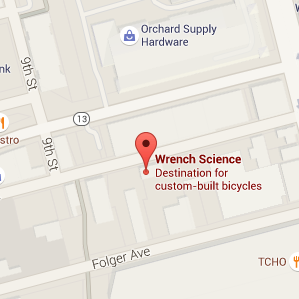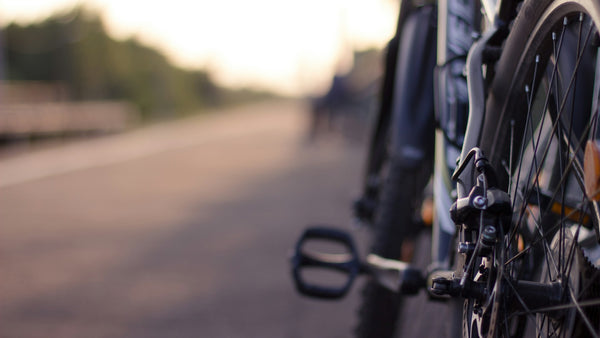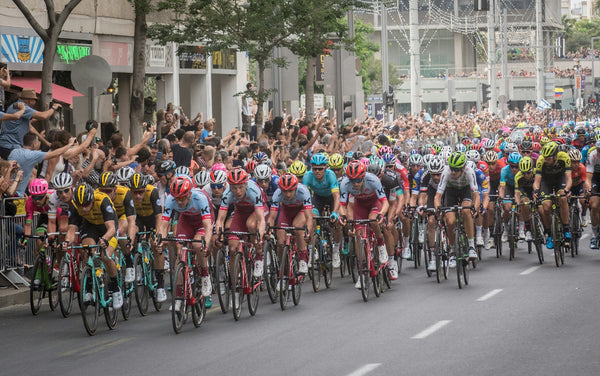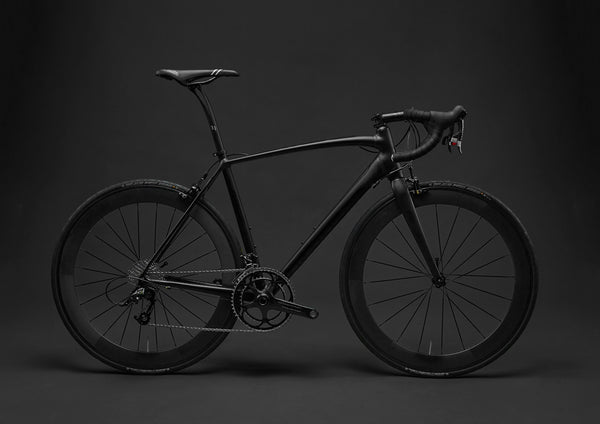Though many people find cycling as a low-impact way to continue exercising after injuring knees running or skiing, knee pain in cyclists is all too common a problem. It doesn’t have to be that way, though. Frequently, knee pain results from something as simple as misaligned cleats. The trick is to diagnose the core issue and choose the right solution to fix it.
This article is not intended to address knee pain that you’ve suffered from a blunt trauma incident either on or off the bike. But if you have had not known injuries and are suffering from knee pain while cycling, we can point out a few of the potential issues and suggest some ways to address and avoid knee pain from cycling.
What causes knee pain when cycling?
For cyclists who have not suffered a blunt trauma injury, most knee pain is the result of repetitive overuse. Cycling knee pain typically occurs in four areas: anterior, posterior, lateral, medial. If you want to zero-in on how to cure knee pain after cycling, it is important to be able to tell which of these four areas are in pain.
Anterior knee pain: what is it?
Anterior knee pain refers to the aching pain at the front of the knee that cyclists can feel both during and after exercise. Most commonly it is the result of the quadriceps muscles and the iliotibial band, which runs along the side of your leg from the hip to below the knee, being overused and stiff. If you are using these muscles and tissues extensively with heavy training loads, you may be putting extra stress on your knees as a result.
How to address it?
If you are riding a ton, a great way to reduce quad stiffness is to do some simple stretches after you are done riding. That will help the muscles stay flexible and avoid stiffening up.
Be sure also to check that your saddle is at the correct height. Anterior knee pain can result when you are riding with your saddle too low.
Get a professional bike fit if you are uncertain what your saddle height should be. And if you know what height it should be, take a measuring tape and make sure it hasn’t slipped from its optimum height. A simple trick we use to make sure the seatpost is not slipping down the seat tube: put a piece of electrician’s tape on your seatpost two millimeters above the entry point to the seat tube. If you ever see the tape flush with the seat tube, you’ll know your saddle height has slipped.
Posterior knee pain: what is it?
As the name suggests, posterior knee pain hits at the back of the knee. It manifests itself as anything from a dull pain to swelling and can cause you to feel unstable on the knee, like it could lock up and hyperextend at any moment. It is frequently the result of the hamstring overstraining the knee in the course of the pedal stroke. When your saddle is too high, then the leg is forced to overextend, increasing the strain on the connection between the hamstring – one of the strongest muscles in the body – and the knee backside.
How to address it?
Similarly to the most common causes of anterior pain in cyclists, the wrong saddle height could be causing you to feel a lot of pain at the back of the knee. Since the hamstrings are such powerful muscles, it’s natural for the connective tissues at the back of the knee to suffer from the strain.
The easiest fix is to lower your saddle slightly. Don’t lower it by too much initially. Just a millimeter or two will be enough to see an improvement. If you lower it by too much too quickly, you could overdo it and end up with anterior knee pain!
This is another case where a professional fit will help avoid this injury. A professional will be able to set you up so that you will not only be more comfortable but able to put out better power. Keep in mind too that any time you change pedals or shoes you will need to revisit your saddle height to make sure you are still at the right level.
Lateral and medial knee pain: what’s the difference
Lateral refers to the outside of the knee while medial is the inside of the knee. As with anterior knee pain, lateral pain on the outside of the knee typically frequently is traced to the iliotibial band that runs the length of the outside of your leg from the hip to below the knee. The iliotibial band can get inflamed from overuse and if the issue isn’t addressed, you can begin to suffer from iliotibial band syndrome (ITBS).
Medial knee pain results from an inflammation of the medial meniscus, which is a pad of cartilage in the knee joint. Both the lateral and medial conditions cyclists can face when they ride with maladjusted cleats when clipped into the pedals. For lateral, usually it means your cleats force your foot or feet to point inwards too much. Medial pain is usually also cleat related, but can be a bit harder to pin down. It might be the cleats are positioned too far to the outside of the shoe, or that it could be causing your pedal stroke to rotate out too much.
How to address it?
Believe us, we’ve spent too many rides sitting at the side of the road trying to position and reposition our cleats when we’ve felt these niggling pains emerging. Sometimes self-adjusting will work, but again this is a situation where a professional bike fitter can be a huge help. A pro will be able to observe your gait, pedaling action and other essential movements to help ascertain what is the best position for your cleats.
What are the best treatments for cycling knee pain?
There’s no doubt in our minds that the best way to treat knee pain is to avoid it altogether. Preventive measures may seem to take up valuable time, but they can help save you pain, injury and even things like requiring surgery down the line.
Everything is connected in the body, so when there is a pain in one place, it may be the result of an imbalance further up the line. Knee pain might not actually have anything to do with the knee, but rather could come from a misalignment or core weakness in the lower back and hips. Focus on your core strength exercises to ensure your legs and joints aren’t forced to cope entirely with the physical effort cycling requires. Things like planks and core engagement exercises (like the one we suggested in our previous article How to Warm up Before Cycling?) will help you make sure that your shoulders, lower back, and stomach muscles are as strong and ready for a workout as your legs.
Stretching your legs and core muscles can also help avoid these types of repetition pains and injuries. Though there is still a lot of debate about whether stretching is helping or hurting performance, it’s important to understand that stretching your major leg muscles and core muscles will allow them to avoid severe stiffness that can end up introducing way too much stress on the soft tissue. Greater flexibility will also help you get into those more aggressive positions on the bike for when you are racing and need to be as aero as possible.
Keep in mind too that some stress injuries are the result of too heavy workloads or too big of workload increases in too short a time. When you are ramping up your training, be certain to do it gradually to allow your body to keep up without hurting itself. And as you increase hours on the bike, don’t forget to make sure your stretching and core workouts keep up with your increased training.

You could also be feeling knee pain if you are consistently pushing too heavy of gears. Try to cultivate a souplesse pedaling style where you spin at a higher RPM in lighter gears. You’ll look more elegant on the bike and ease some of the pressure off your knees.
When you do feel a pain in your knee, treatment can include icing the affected area. Be certain not to over-ice or get an ice burn. And when things are not improving, sometimes the only answer is rest. If none of these self-help suggestions and a proper bike fit result in relieved knee pain, then it’ll be time to seek professional medical attention.
Riding a bike is one of the best ways to exercise without causing injury. But sometimes it can also lead to stress injuries as a result of things like repetitive motion, misalignment, and overwork. We are just discussing some of the most common ways for how to avoid knee pain when cycling and how to treat knee pain after cycling. Hopefully you’ll be back on the bike in no time.



































































































































































































































































